How Danish grower cut pesticide use and improved soil health
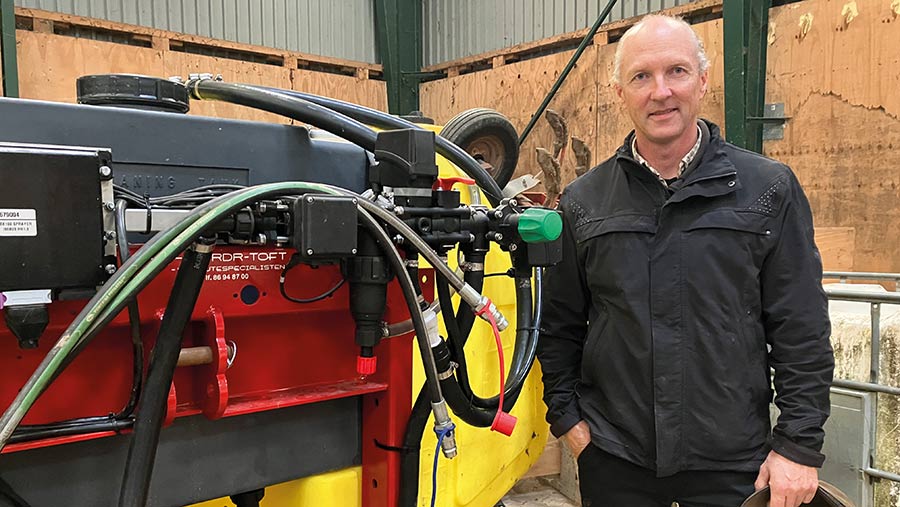 Niels Hansen © MAG/Emma Gillbard
Niels Hansen © MAG/Emma Gillbard Ninth-generation farmer Niels Hansen aims to produce as much output from as little input as possible.
Thanks to the adoption of a conservation agriculture system, he is now successfully achieving this on his 300ha arable farm on the Danish island of Zealand, an hour’s drive from Copenhagen.
Over the past five years he has placed a huge focus on the biology of his sandy, clay soils, operating a min-till system with an array of cover crops to boost microbial and fungal activity.
Organic matter levels have improved, with worms in every spade of soil to show for it.
See also: How a winning mixed soil farmer cut arable crop inputs
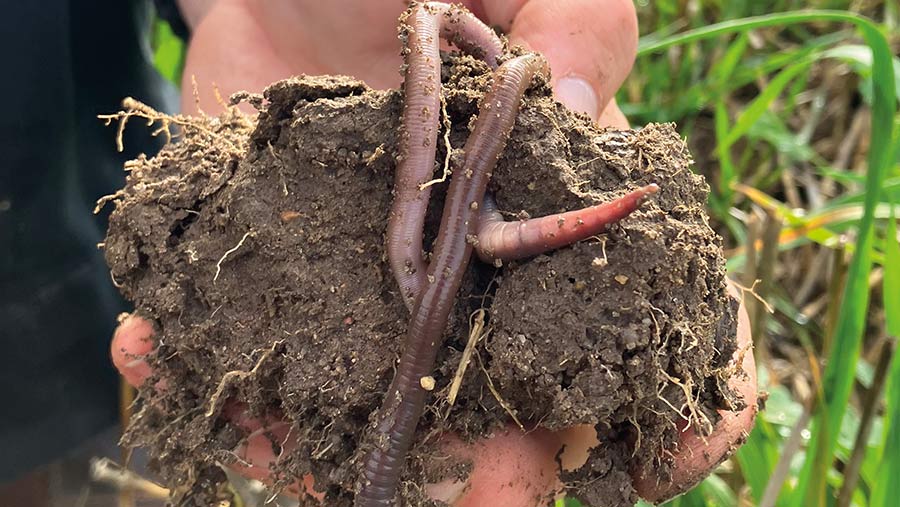
© MAC/Emma Gillbard
This has seen him eliminate insecticides, cut fuel use by 50% as a result of reduced cultivations, and eradicate fungicide sprays across half of his winter wheat area.
Crops are notably healthier, and wheat blends with three to five varieties in each mix have helped him cut back on fungicide sprays.
The remaining wheats receive just one T3 spray to control septoria, but as soil health improves further, Mr Hansen hopes to eliminate fungicides across all wheat crops.
Farm facts
Cropping includes milling wheat, feed wheat (8.5t/ha), spring malting barley (6t/ha), oilseed rape (4t/ha), spring beans, spring peas (ranges depending on year 3-6.5t/ha) and grass for seeds
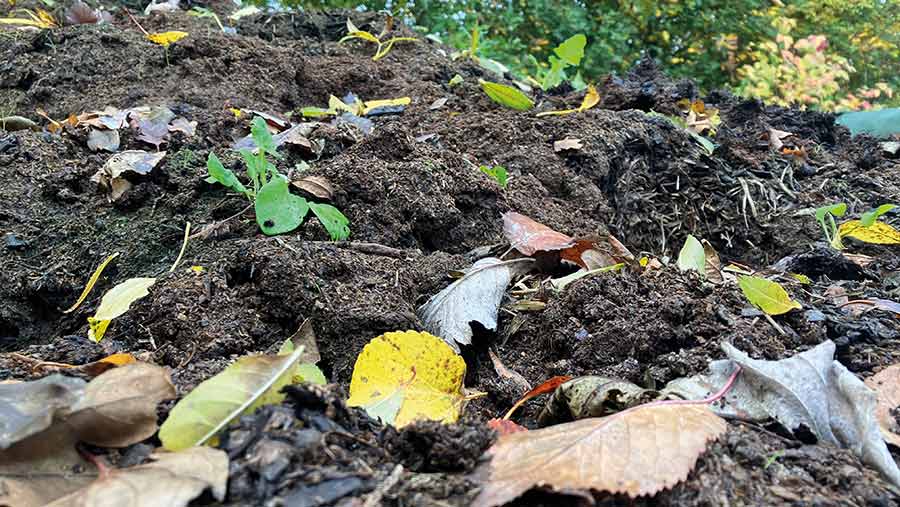
© MAG/Emma Gillbard
He doesn’t want to stop there. “How far can we take this? What other inputs can we significantly cut back without losing yield?” he asks.
Reducing fertiliser and glyphosate is next on his bucket list. He believes his soils and crops are ready for the challenge.
He is now using liquid compost brews to help achieve this and trialling an area of direct-drilled winter wheat into a cover without desiccation.
Up for the challenge
However, he admits the process is challenging. “There is so much to learn about soils and no one really knows much about it.
“In one handful of soil there are 100,000 different lifeforms, all working together. We as farmers have a huge opportunity to build up soil microbe populations, working with these organisms, not against them.
“It is a complicated process. Soil was here many years before humans existed and, just like humans, soil is extremely complicated,” he says.
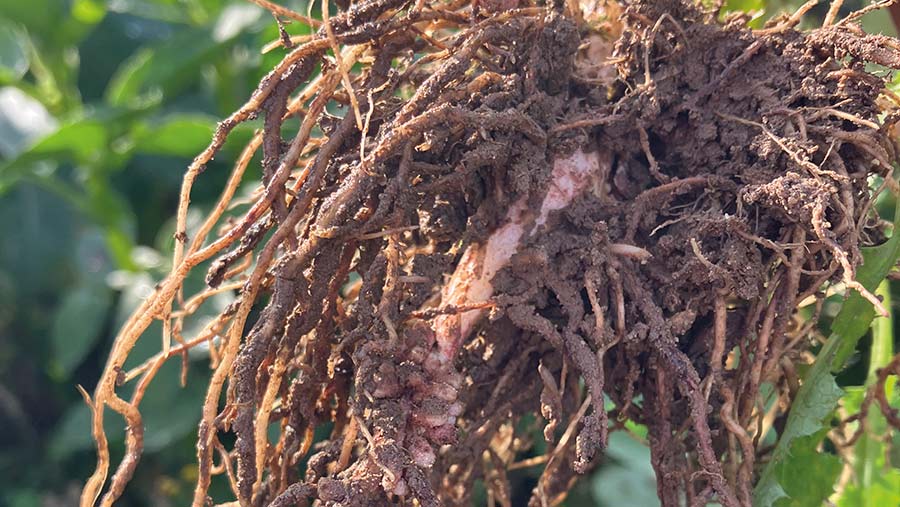
© MAG/Emma Gillbard
Compost creation
This year marks the first season of applying compost brews. Mr Hansen applied the liquid at the time of drilling to 35ha of wheat, which he hopes will enable him to cut artificial fertiliser rates by 20%.
Liquid fertiliser is the main source of nitrogen. He avoids the use of granular fertiliser due to fears this could disrupt the natural balance of fungus in the soil.
Milling wheats receive 200kg N/ha and those following pulses get 190kg N/ha.
A little-and-often N approach is used, with three to four applications, but Mr Hansen is considering even smaller and more frequent sprays – six to eight – to help ensure crops have sufficient nutrients available.
Compost generated via the aerobic Johnson-Su process consists of fungicide-free straw baled on farm, woodchip, grass, horse manure and a small amount of a previous compost to get the bugs working.
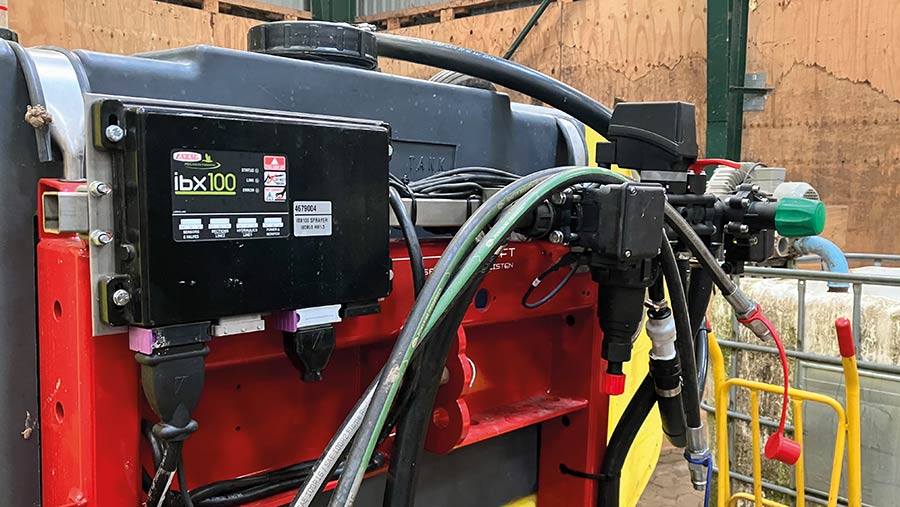
A separate tank is used to spray the liquid compost © MAG/Emma Gillbard
It is stored in aerated containers on top of a pallet, with holes placed every 30cm in the heap to enable continuous airflow.
For optimum use, the compost should be left in a heap for a maximum of 60 weeks to get as much biological activity as possible.
He then adds 5-10kg of compost into an IBC and fills it up to 1,000 litres with water. This then bubbles for 24 hours, being stirred continuously until it has a brown, soapy texture.
Due to the risk of chemical contamination, he uses a separate tank that fits on the front of his John Deere tractor instead of the existing sprayer.
Plans to cut back on glyphosate
Aiming to stay one step ahead of government legislation, Niels Hansen hopes to scale back on glyphosate use, which he employs to remove covers and grassweeds.
He selects species that naturally die in the frost to reduce use and is now trialling drilling straight into a mix of radish and oats. If successful, this could be the start of a new farming technique.
“Glyphosate disturbs the natural balance of soil biology, harming good bacteria and indirectly selecting for specific plant populations. As a result, rat’s tail fescue is becoming a problematic weed,” he says.
To improve the efficacy of herbicides, a small amount of nitrogen fertiliser is placed in the spray to open the leaf pores and aid glyphosate uptake.
Milling wheat future?
As Mr Hansen travels further down the conservation agriculture path, milling wheat might be dropped from the rotation, he says.
Poor premiums and additional fertiliser requirements mean the crop is losing its appeal.
“The seed also comes treated with a chemical dressing and there is no option to buy it without. It’s so important for seedlings to get off to the best start, and chemical treatments can upset mycorrhiza fungi in the roots.”
Companion cropping oilseed rape with beans
As oilseed rape is not a host for mycorrhizae fungi, Niels Hansen establishes the crop with a companion of either buckwheat, clover or beans.
Beans have proven the most effective companion. Although there is no yield increase (oilseed rape still averages 4t/ha), there is significantly fewer inputs, with just 40kg of nitrogen/ha applied.
He drills at a seed rate of 80-100kg/ha for the beans in every second row, usually before 20 August, and aims for 35 OSR plants/sq m.
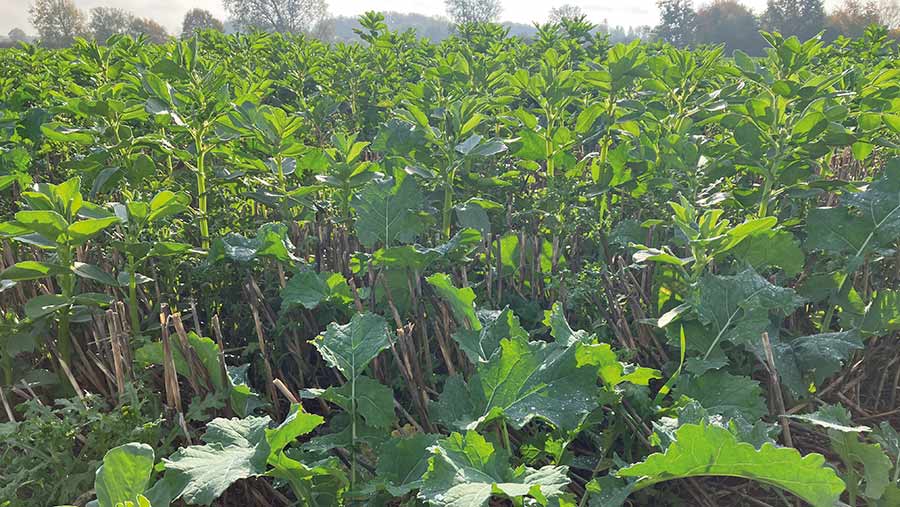
Beans and OSR crops © MAC/Emma Gillbard
In comparison, Mr Hansen found clover challenging to establish due to the thick, chopped wheat straw limiting emergence.
Buckwheat proved an effective option, helping with cabbage stem flea beetle issues, but not to the same extent as beans.
After a very dry summer and difficult establishment conditions, there appears to be an infestation of weed in the rapeseed and bean crop.
If the issue persists, he plans to graze the neighbour’s sheep to remove the weed, rather than relying on artificial chemicals.
Establishing crop before the other is harvested
One oilseed rape establishment technique that a number of Danish farmers use is broadcasting into a standing crop of wheat before harvest.
This effectively enables rapeseed to be planted near the beginning of August before the previous crop is harvested.
This is something Mr Hansen is considering, but an increase in seed rate may be required.
“This year, the conditions were far too dry for us to try this, but it is a technique other farmers in the area use successfully.”

